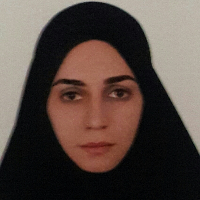The study of the Structure and Articulation of " Human-Script" Compound in the Artificial Arts of the Seljuk Era
Author(s):
Article Type:
Research/Original Article (دارای رتبه معتبر)
Abstract:
The combined and decorative motifs of the "human-script" in the artificial arts of the Seljuk period are a combination of the head and body of human in a stylized and abstract manner in various moods and situations, along with the common script lines of that era, such as Kofi and Naskh script lines. These motifs have been used with a diverse structure of the earlier motifs of that era, in harmony with the components, frame, and even painted place. Visual elements and geometric motifs play a major role in the various parts of this decorative composition, which made it as a distinctive and appropriate motif in many fields of graphic design. Reviewing the structure and articulation of these illustrated-lines , which became very close to the illustration and were less addressed in the Islamic art researches, in addition to the familiarizing with the innovations and the specific quality of the artistic practices of this era, due to the high graphical capabilities of the structure of these compounds can be considered as a new approach in order to use in the variety of artworks including graphic arts and animated graphics.
● Research Questions
1. How is the jointing in "human-script" compounds?
2. Which calligraphy techniques and sensitivity Method were the most effective one in "human-script" compounds?
● Hypotheses
In these combined motifs, the Jointing (fastening) method human motifs to inscriptions are seen in four general modes: the complete joint of human faces to the stems of written letters, the division of space into two upper and lower parts, the combination of human figures and script lines, and, finally, placing the human motifs between the words and phrases separately.
In these inscriptions, Nask script is more commom than the other calligraphy technique. Also, at the beginning of the work, in terms of the authors, using the variety of motifs in the composition of words and positioning in a specific form, as prominent methods, have been very effective in the general structure and the sensitivity of the "human-script" compounds.
The purpose of this research is recognizing the basis of the structure of combined "human-script" motifs in the artificial arts of the Seljuk era, which can have great visual features in various branches of contemporary arts. So far, no specific research has been done on the structure and articulation of combined "human-script" motifs of the Seljuk era. This research was done by descriptive-analytical method and also library resources, articles and valid websites were used.
● Research Questions
1. How is the jointing in "human-script" compounds?
2. Which calligraphy techniques and sensitivity Method were the most effective one in "human-script" compounds?
● Hypotheses
In these combined motifs, the Jointing (fastening) method human motifs to inscriptions are seen in four general modes: the complete joint of human faces to the stems of written letters, the division of space into two upper and lower parts, the combination of human figures and script lines, and, finally, placing the human motifs between the words and phrases separately.
In these inscriptions, Nask script is more commom than the other calligraphy technique. Also, at the beginning of the work, in terms of the authors, using the variety of motifs in the composition of words and positioning in a specific form, as prominent methods, have been very effective in the general structure and the sensitivity of the "human-script" compounds.
The purpose of this research is recognizing the basis of the structure of combined "human-script" motifs in the artificial arts of the Seljuk era, which can have great visual features in various branches of contemporary arts. So far, no specific research has been done on the structure and articulation of combined "human-script" motifs of the Seljuk era. This research was done by descriptive-analytical method and also library resources, articles and valid websites were used.
Keywords:
Language:
Persian
Published:
Bagh-e Nazar, Volume:14 Issue: 54, 2017
Pages:
47 to 56
magiran.com/p1775497
دانلود و مطالعه متن این مقاله با یکی از روشهای زیر امکان پذیر است:
اشتراک شخصی
با عضویت و پرداخت آنلاین حق اشتراک یکساله به مبلغ 1,390,000ريال میتوانید 70 عنوان مطلب دانلود کنید!
اشتراک سازمانی
به کتابخانه دانشگاه یا محل کار خود پیشنهاد کنید تا اشتراک سازمانی این پایگاه را برای دسترسی نامحدود همه کاربران به متن مطالب تهیه نمایند!
توجه!
- حق عضویت دریافتی صرف حمایت از نشریات عضو و نگهداری، تکمیل و توسعه مگیران میشود.
- پرداخت حق اشتراک و دانلود مقالات اجازه بازنشر آن در سایر رسانههای چاپی و دیجیتال را به کاربر نمیدهد.
In order to view content subscription is required
Personal subscription
Subscribe magiran.com for 70 € euros via PayPal and download 70 articles during a year.
Organization subscription
Please contact us to subscribe your university or library for unlimited access!



